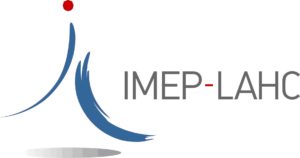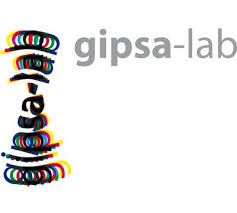Design of solutions for identification (THID) and authentication by non-contact approaches in the THz domain.
Published : 5 February 2020


![]()
PhD subject
Subject tittle:
Design of solutions for identification (THID) and authentication by non-contact approaches in the THz domain.
Laboratories:
IMEP-LAHC – Université Savoie Mont-Blanc GIPSA Lab. – Université Grenoble Alpes
Bâtiment Chablais – Campus Scientifique 11 Rue des Mathématiques
73376 Le Bourget du Lac – France 38400 Saint-Martin-d’Hères
Contact:
Frédéric Garet | frédéric.garet@univ-savoie.fr Cornel Ioana | cornel.ioana@gipsa-lab.grenoble-inp.fr
IMEP-LAHC Laboratory :
The IMEP-LAHC Laboratory (http://imep-lahc.grenoble-inp.fr/), situated at Le Bourget du Lac (Savoy-FRANCE), conducts research in the fields of micro and nano-electronic components, radiofrequency and millimeter, frequencies and photonics and THz optoelectronics. The team involved in this project belongs to the department PHOTO (PHOtonics Terahertz and Optoelectronics) and belongs to the team that played a pioneering role in the development of THz spectroscopy in France from the mid-90s. The laboratory has published major contributions in the fields of precise extraction of material parameters and determination of the THz response (in the 100 GHz – 5 THz range) of devices integrating for example metallic or dielectric photonic structures at 1, 2 or 3 dimensions. In 2011, they proposed the first concept of a THz tag to be used for identification in the THz domain (THID) [1].
GIPSA Lab Laboratory :
The GIPSA Lab (http://www.gipsa-lab.fr/), conducts theoretical and applied research on the signals and systems produced and exchanged by humans or their natural and technological environments. It is confronted with measurements, data and observations from physical, biological, cognitive or artefactual systems in order to provide viable, efficient decision-making, action and communication devices compatible with physical and human reality. These developments are based on theories in information processing and in control / command for the development of models and algorithms, validated by hardware and software implementations.
GIPSA-lab maintains a constant link with applications in very varied fields: health, environment, energy, geophysics, embedded systems, mechatronics, micro and nanosystems, industrial processes and systems, telecommunications, networks, transport, operational safety and security, human-machine interaction, linguistic engineering, etc.
The candidate’s profile :
The candidate, can come from a Master in Physics or Electronics with skills in electromagnetism or signal and information processing, analysis of transient phenomena and inference of physics in data analysis approaches.
Machine learning skills can be also interesting. He may also have skills in instrumentation and / or optics or optoelectronics.
PhD subject :
The identification and authentication of products today represent colossal challenges both in terms of sums and jobs. Indeed, many economic sectors are facing new threats related to the authenticity and integrity of documents or goods. Counterfeiting is thus a scourge worldwide and leads to a very significant shortfall for
many manufacturers.
The subject of this thesis is involved of a project bringing together 2 research laboratories: IMEP-LAHC and GIPSA Lab, as well as 2 companies: TIHIVE and ARJO SOLUTION which respectively develops THz imaging system and optical solutions to fight counterfeiting. The objective of this project is to design and implement solutions for the identification and/or authentication of manufactured products. The solutions are envisaged in terahertz (THz) frequency range:
1) through the use of chipless tags which can either be directly integrated or more simply attached to products,
2) via the use of the intrinsic properties of products.
The selected candidate will aim to study, propose and develop various identification and/or authentication solutions that can be used in the THz frequencies domain, such as:
– Tags based on periodic and resonant structures (diffractive structures in particular) based on low cost polymers and which exhibit characteristic (specific and unique) signatures in the THz field [2,3].
– By directly using the “intrinsic signature” of the product, obtained by THz imaging for example [4].
More specifically, the work will consist of different steps:
– To design, manufacture and characterize (signature measurement) the THz tags. This work will be carried out in particular at the IMEP-LAHC
– To develop signature processing methods to assess the richness of the information contained in the measured signatures of the tags. These methods will be based on solutions already demonstrated at the GIPSA Lab [5,6].
– To develop a complete authentication solution integrating tag(s), an imaging system from TIHIVE and a signature processing tool. The whole solution should take into account the real application constraints given by ARJO SOLUTIONS.
This work is therefore based on several complementary application research areas:
– An experimental part: implementation of methods for measuring the THz signatures of the tags: THz spectroscopy in the THz domain (THz-TDS) and THz imaging.
– A theoretical part: modeling of the diffractive structures behavior that will be at the origin of the richness of the THz signature of the tag.
– Finally, the definition and implementation of data processing algorithms constitute a part at the border between physics and signal processing. It aims to build algorithms for the identification and classification of tags from innovative descriptors.
Software’s: MATLAB, C/C++, Python
Key words: Time Domain THz Spectroscopy (THz-TDS), THz Tag, Identification and authentication technics, Spectral Analysis, Transient signals analysis, classification, machine learning.
Beginning: September/October 2020 – 3 years’ contract.
Salary: 21240 €/year (before taxes), 16070 €/year (after taxes).
References :
[1] M. Bernier, F. Garet, E. Perret, L. Duvillaret, S. Tedjini,” THz encoding approach for secured chipless radio frequency identification”, Applied Optics, Vol. 50, Issue 23, pp. 4648-4655 (2011)
[2] S. Salhi, F. Bonnefoy, S. Girard, M. Bernier, E. Perret, N. Barbot, R. Siragusa, F. Garet ” Enhanced THz tags authentication using multivariate statistical analysis “, IRMMW2019 44th International Conference on Infrared and Millimeterwave – Paris – France (1st -06st September 2019).
[3] M. Hamdi, F. Garet, L. Duvillaret, Ph. Martinez, G. Eymin Petot Tourtollet, ” Identification Tag in the THz Frequency domain using Low Cost and Tunable Refractive Index Materials”, Ann. Des Télécom., 68, 7-8, pp. 415-424 (August 2013) – DOI 10.1007/s12243-013-0374-7
[4] F. Bonnefoy, C. Ioana, M. Bernier, E. Perret, N. Barbot, R. Siragusa, F. Garet ” Identification of random internal structuring THz tags using images correlation and SIWPD analysis “, IRMMW2019 44th International Conference on Infrared and Millimeterwave – Paris – France (1st -06st September 2019).
[5] Angela Digulescu, Irina Murgan, Cornel Ioana, Ion Candel, Alexandru Serbanescu. Applications of Transient Signal Analysis Using the Concept of Recurrence Plot Analysis. Recurrence Plots and Their Quantifications: Expanding Horizons, 180, pp.19-38, 2016, 978-3-319-29921-1. 〈10.1007/978-3-319-29922-8_2〉. 〈hal-01447912〉
[6] Angela Digulescu, Cornel Ioana, Alexandru Serbanescu, Phase Diagram-Based Sensing with Adaptive Waveform Design and Recurrent States Quantification for the Instantaneous Frequency Law Tracking. MDPI Sensors 2019, 19, 2434; doi:10.3390/s19112434



 Contact us
Contact us How to find us
How to find us









